Content
- 1 Hyacinth - the flower of the rains
- 2 What types are there
- 3 Video "Planting hyacinths at home"
- 4 Main plant varieties
- 5 Water hyacinths. Varieties
- 6 Oriental hyacinths. Varieties
- 7 White hyacinths. Varieties
- 8 Pink hyacinths. Varieties
- 9 Pink hyacinths. Varieties
- 10 Blue hyacinths. Varieties.
- 11 Lilac and purple hyacinths. Varieties.
- 12 Red hyacinths. Varieties.
- 13 Yellow and orange hyacinths. Varieties.
- 14 Black hyacinths. Varieties.
- 15 Terry hyacinths. Varieties
- 16 Multiflorous hyacinths. Varieties
- 17 Types and varieties of hyacinths
- 18 The most popular and beautiful varieties of Oriental hyacinth are:
Sustainable Homestead: Hyacinths are versatile flowers - they can be grown both at home in pots and in the garden in flower beds and in containers.
Hyacinth - the flower of rains
Hyacinths - these multi-colored flowers fill our garden with juicy spring colors and an unforgettable enchanting aroma year after year! The homeland of this flower is Asia Minor, where hyacinths bloom during the warm spring rains.
In our gardens, we begin to feel their delicate, delicate and surprisingly persistent aroma in early spring, as soon as the sun begins to warm up well. Their inflorescence-sultan, collected from many small flowers in the shape of stars, bloom from April to May and delight us for 2-3 weeks. Usually, the blue varieties of hyacinths always bloom first, then pink, white, red, lilac varieties begin to bloom, and later yellow and orange varieties bloom.
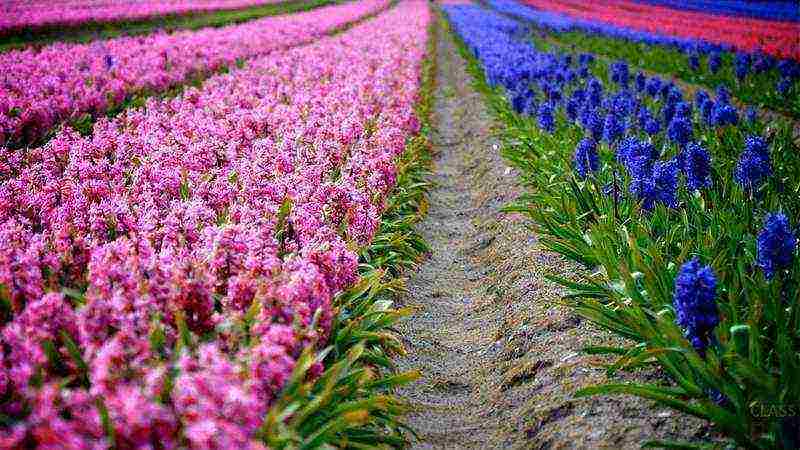
The brightest and most fragrant
There are many large-flowered, small-flowered and terry hyacinths in a huge palette of colors.
Here are some of the most flavorful, lush, and disease-resistant varieties:
"Aqua" - it is a real rain flower with shades of blue, lilac and purple and resembles a frozen water drop;
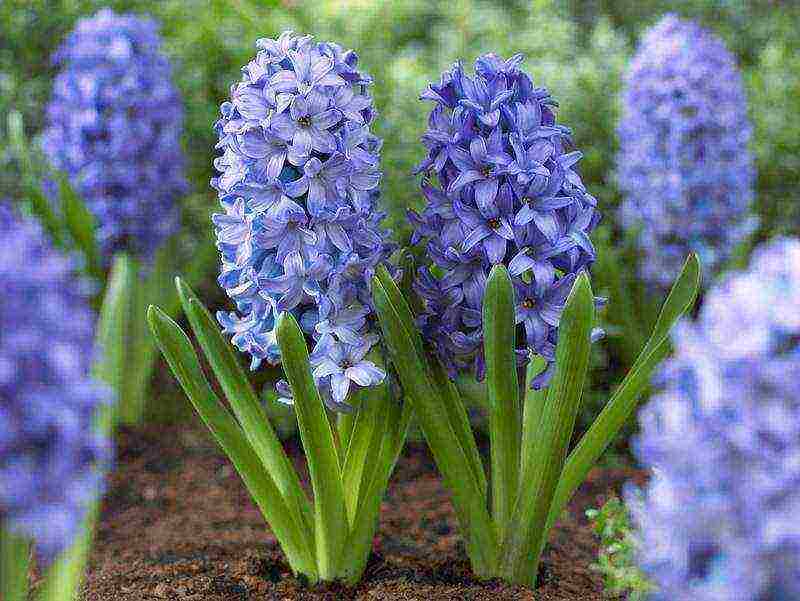
Red Magic - this is a hyacinth with an unusual, red-pink color with contrasting white eyes at the base of the petals and flowers up to 3.5 cm in diameter with narrow, slightly curved petals at the ends;
"Raphael" - a hyacinth with a very exquisite aroma and an original shape, in which each bell flower is as if cut to the base into narrow petals-stripes, which does not allow it to fully open, like other varieties of hyacinth and this unique form of inflorescence, with petals hanging down (like as if slightly disheveled by the spring wind), makes it unusual and refined;
"Pink Pearl" - this is a very popular hyacinth with a dense inflorescence of large pink flowers with long (up to 7 cm) inflorescences and looking unusual and decorative;
"Aida" - bright ultramarine hyacinth with very large flowers up to 4 cm in diameter, with a spherical inflorescence and very resistant to the vagaries of the weather.
What do hyacinths love and dislike?First, let's define what hyacinths love:
- grow in sunny elevated places that are warmed up throughout the summer;
- loose sandy loam or loamy soil with a neutral or slightly alkaline reaction;
- moderately moist soil throughout the growing season, otherwise they will quickly fade;
- timely loosening and weeding;
- regular feeding - the first one is carried out immediately after the appearance of sprouts (ammonium nitrate); the second - at - budding (ammonium nitrate 20 g / m2, superphosphate 40 g / m2, potassium chloride 30 g / m2); the third - after the end of flowering (superphosphate and potassium chloride, 40 g / m2).
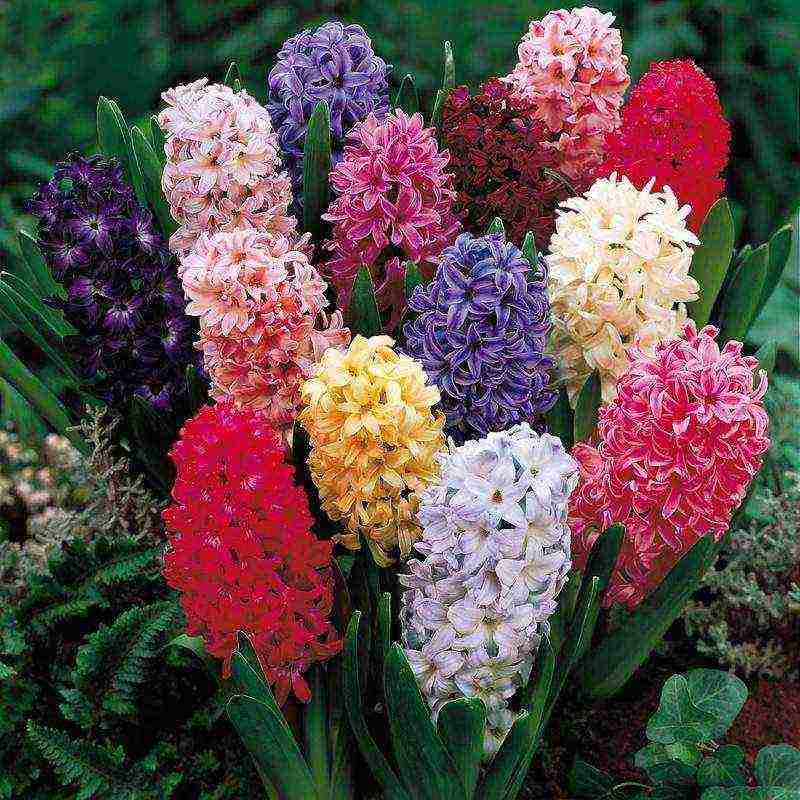
Hyacinths do not like:
- waterlogging of the soil, as the bulbs can rot;
- grow in the shade, since in this case you will have to dig up hyacinth bulbs annually;
- storage of bulbs at low temperatures;
- early dates of planting in the ground;
What else you need to know about hyacinths:
Cutting flowers is best done in the morning before watering, they should be in full bloom. Faded flowers must be cut off, while leaving a shoot. If you plant hyacinths correctly, where they like to grow, that is, in sunny elevated places, then you can them leave to grow without digging for 3-5 years... Planting hyacinth bulbs should be carried out in the fall at the end of September - at the beginning of October, when the soil temperature will be from 6 to 100C, since hyacinths need to take root before the onset of frost in order to overwinter normally and please us in the spring with their lush flowering.
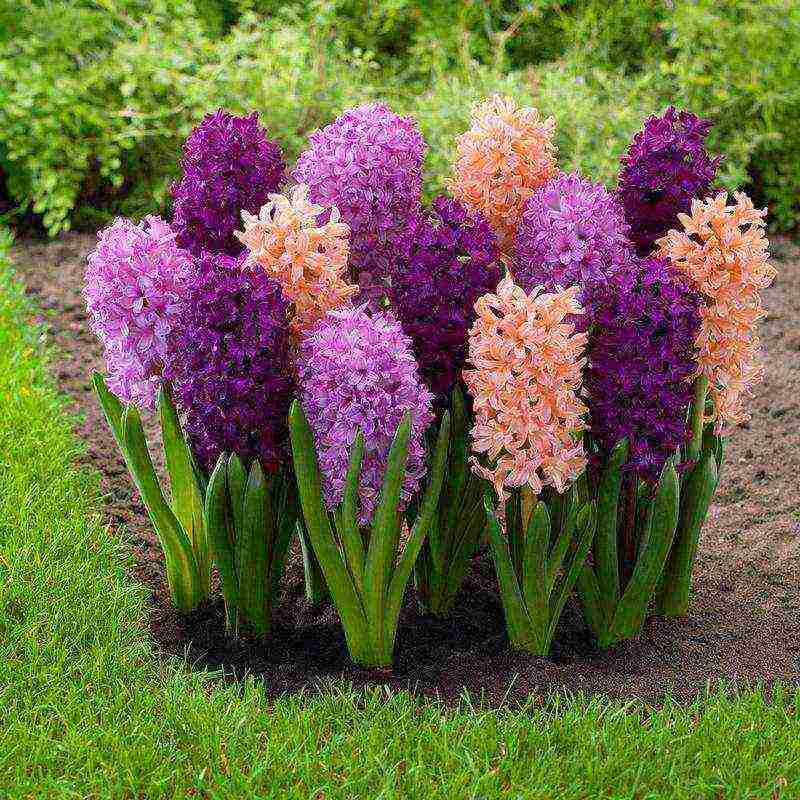
Medium-sized bulbs are selected for planting in the ground, and large ones are best used for forcing. It is recommended to plant hyacinths in a sand capsule. This is done like this: pour a small layer of sand into the hole; if the soil is dry, then pour water and, when the water is absorbed, we plant an onion in the hole, slightly pressing it; from above we cover the onion, first with sand, and then with soil. After that, it is good to mulch the plantings with a layer of peat (5 cm). And with the onset of stable cold weather, hyacinths must also be covered with dry leaves with a layer of 20 cm or other insulating materials.

Universal flowersHyacinths are versatile flowers, they can be grown both at home in pots and in the garden in flower beds and in containers. Hyacinth is one of the most popular crops for forcing. If you want flowers for Christmas (flowering in December - January), plant the bulbs in August - September. For flowering in March, the bulbs are planted in October. Oriental and miniature hyacinths are best suited for forcing.
Diseases and pests of hyacinths
The main causes of diseases of hyacinths in poor-quality planting material or in improper agricultural techniques are thickened plantings, heavy waterlogged soil. With yellow bacterial rot, the plant lags behind in growth, stripes and spots appear on it, the tissues of the bulb become licky and acquire an unpleasant odor. Diseased plants are destroyed, and the hole is etched with bleach.
Against root mites that gnaw out the tissue of the bulb, hyacinths are treated with coloid sulfur (40 g / 5 l of water) before budding. Contributes to the appearance of the pest of stagnant water, therefore good drainage is needed.
In places where the stem nematode is damaged, leaf tissues become discolored, yellowish spots form on it, diseased leaves turn brown and dry out. The fight is reduced to the destruction of diseased plants, etching and disinfection of soil and equipment.
Blooming at the same time, hyacinths create an elegant and festive impression. It is only necessary to select varieties that are combined both in appearance and in terms of flowering. In today's review, the main species and varieties of hyacinths are presented with their brief characteristics.
What types are there
Hyacinth is a perennial bulbous flower. At the moment, three main types of this plant are recognized.
Hyacinth Litvinova
The homeland of this species is the mountains of Turkmenistan and Iran. The leaves are wide and spread out, gray in color. Plant height up to 25 cm. The flowers are light blue, with pronounced cuts on the petals and protruding stamens.
Transcaspian
In the wild, it is found in Turkmenistan and the Kopetdag. The bulb has one or two stems up to 20 cm tall. Each forms from 4 to 10 blue flowers. The leaves are thick.
Oriental
The eastern species is the most extensive. Includes several subspecies:
- Dutch. Flowering lasts up to 21 days. The average height is up to 23 cm. 30–35 buds are formed on a single peduncle;
- Whitish or Franco-Roman. Peduncles can be 2-3, each up to 15 cm long. Brushes are white;
- The Provencal subspecies is similar to the previous one, only with pink petals. It was he who became the basis for the breeding of all existing varieties. Selection work was carried out by crossing subspecies and selecting evading forms.
Video "Planting hyacinths at home"
From this video you will learn how to properly plant hyacinths at home.
Main plant varieties
At the moment, there are more than 400 varieties of hyacinths. 170 are officially included in the international directory. About 60 have gained mass popularity, which are used, among other things, on an industrial scale.
Hyacinth varieties are traditionally divided into color categories.
Consider a description of the most common varieties.
Blue and blue
In most cases, it is these hyacinths that bloom first:
- Marie (Maria). Inflorescences are small, cylindrical in shape. Deep blue petals and crisp white throat create a dramatic contrast. Plant height ranges from 18-25 cm;
- Delft Blue (Delft Blue). Large-flowered variety (up to 4 cm). The petals are blue. Peduncle up to 20 cm, inflorescences 15 cm long, rather wide. The Delft blue hyacinth is characterized by long flowering, up to 25 days;
- Blue Jacket (Blue Jacket). The flowers are blue-purple, up to 4 cm, with lightening to the edge of the perianth, collected in cylindrical inflorescences of 30-40 pieces. There is a pronounced pleasant smell. Flowering lasts 10-15 days. Low winter hardiness;
- Aida (Aida). The brushes are dense, up to 50 flowers of a rich ultramarine color. Peduncle height up to 25 cm. The variety reproduces well, gives excellent distillation;
- Crystal Palace (Crystal Palace). Double flowers, 3.5-4 cm, violet-blue, sometimes blue. Clusters are loose, 30–35 flowers. The total height is up to 30 cm. The variety blooms in March-April;
- Rembrandt (Rembrandt). The petals are dark blue with a light border. Inflorescences are dense, up to 25 cm. Exude a pleasant aroma;
- Sky Jacket Petals of a sky-blue hue, with a wide light border. Plants up to 25 cm high.
Pink and red
- Fondant The variety belongs to large-flowered (up to 4.5 cm). The petals are pearlescent pink. The length of the inflorescences is up to 20 cm. Due to the unpretentiousness and endurance of hyacinth, Fondant is often grown on an industrial scale;
- Apricot Passion The flowers are large (4–5 cm), light pink, look especially attractive against the background of saturated green leaves. Smell with fruity notes. Peduncle height up to 30 cm;
- Vuurbaak (Wurbak). The flowers are star-shaped, up to 3.5 cm, red-pink, with a slight lilac tint and a light border. Collected in brushes of 25-30 pieces. The variety belongs to the group of garden hyacinths;
- Red Diamond (Red Diamond). The flowers are densely double, up to 5 cm, deep red, collected in lush dense inflorescences. Plant height 20-30 cm;
- Pink Perl (Pink Pearl). The brushes are shaped like a cone. The petals of a juicy pink shade are interestingly combined with dark stripes on the narrow lobes of the perianth. Hyacinth Pink Pearl is distinguished by unusual bracts: due to their length (up to 7 cm), they resemble leaves;
- Jan Bos The petals are red, with a touch of fuchsia. There is a light border around the edges. The pharynx is white. Diameter - up to 3 cm. Inflorescences are dense, cylindrical in shape. Hyacinth Jan Bos is a good choice for early distillation;
- Red Magic (Red Magic). Inflorescences are spherical-cylindrical, 10-15 cm long, dense. The petals are most often intense red with a white throat.
Lilac and purple
- Blue Saphire (Blue Sapphire). The flowers are dark, almost black, deep purple-burgundy color. They look velvety. Delivers a subtle pleasant aroma. Peduncle - up to 25 cm;
- Woodstock (Woodstock). The length of the inflorescences is up to 15 cm. The flowers are purple-crimson. The tips of the leaves also have a raspberry hue. A hyacinth like Woodstock is ideal for home distillation;
- Atlantic Saturated lilac inflorescences of Atlantic hyacinth exude a pronounced pleasant aroma. Large flowers - up to 4 cm. Stem - up to 25 cm. Good resistance to fungal diseases and adverse weather conditions;
- Purple Sensation Brushes are dense, lilac-lilac, up to 50 flowers, 3.5-4 cm in diameter;
- Anna Liza (Anna Liza). Small light lilac flowers look like bells. The brushes are dense. The variety is suitable for indoor and outdoor cultivation;
- Dark Dimension (Dark Dimension). A very spectacular and unusual variety. The petals are black-violet, the border is lighter. Abundant flowering earlier. High endurance and vitality;
- Manhattan (Manhattan).Violet-blue terry variety. Peduncle - 20-30 cm;
- Miss Saigon (Miss Saigon). An exquisite lilac variety (20-30 cm). Blooms in late April;
- Splendid Cornelia Lilac petals. Darker central veins stand out against a light background. The inflorescences are dense, have a regular cylindrical shape. Stem height up to 25 cm. The smell is pleasant, pronounced.
White and yellow
- Carnegie (Carnegie). The average plant height is up to 22 cm. The petals are delicate, white. Perianth lobes are wide. Cylindrical brushes. Hyacinth Carnegie is very unpretentious, suitable for beginners;
- Aiolos (Ailos). The flowers are snow-white and very fragrant. Tall variety - up to 35 cm. Flowering period from April to May. The variety is hardy and disease resistant, therefore suitable for beginners;
- Avalanche This large-flowered variety has a pronounced pleasant aroma. The petals are white. Peduncle - up to 25 cm;
- Gipsy Queen (Gypsy Queen). The average height of the peduncle is up to 28 cm. The petals are rich orange. Hyacinth Gypsy Queen can be grown in a pot or outdoors. Suitable for cutting. Flowering lasts up to two weeks;
- City of Haarlem Popular large-flowered variety up to 30 cm in height. Hyacinth City of Haarlem has light yellow petals with strongly curled tips and creamy yellow edges of the perianth lobes;
- Bestseller The inflorescences are lush, salmon-cream. Stem - up to 25 cm;
- Brooklyn (Brooklyn). The petals are bright yellow, as if waxy. Inflorescences are dense, fragrant. Height up to 20 cm;
- Yellowstone (Yellowstone). Light yellow early variety. Blooms in March-April. Peduncle - up to 30 cm;
- Gipsy Princess Large-flowered variety up to 20 cm. Lemon-yellow petals. Early flowering (March-April).
If you are planning to make a multi-colored selection, pay attention to branded mixes, in which varieties are selected, including by flowering time.
Previously, up to 30 species were included in the genus of hyacinths, however, after the reorganization of the botanical classifications, most of them passed into another genus. Currently, there are only three left in it:
Oriental hyacinth (H. orientalis), the most common species from which all currently existing decorative varieties are created. The wild form grows in Turkey, Lebanon, Syria, has a thin peduncle with rarely located blue, pink, yellowish-white flowers, has a strong pleasant smell.
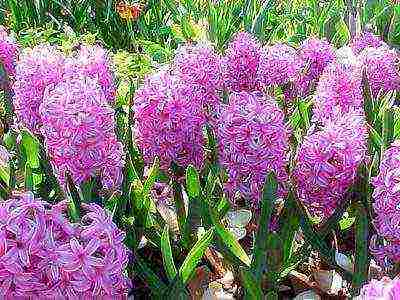
Hyacinth Litvinov (H. litwinowii), up to 25 cm high, with bluish spreading leaves, which are wider than that of the eastern hyacinth, and pale blue flowers, strongly cut, with protruding stamens. It grows in the mountainous regions of Turkmenistan and Iran.
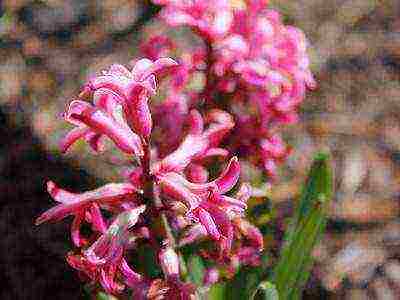
Transcaspian hyacinth (H. transcaspicus), with one or two stems up to 20 cm high, fleshy bare leaves, identical along the entire length, and light blue flowers, 4-10 pcs. in a racemose inflorescence. It grows in the Kopetdag mountains in Turkmenistan.
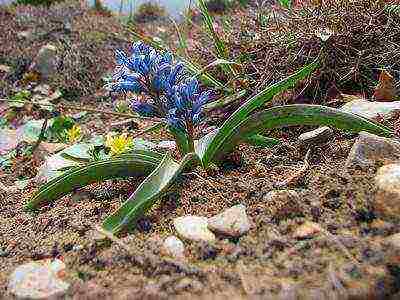
Some sources also refer the last two types of hyacinth to another genus, hyacintella.
A number of popular garden plants called hyacinths do not belong to this genus:
Mouse hyacinth (Muskari), a genus of small bulbous plants of the hyacinth subfamily, with small blue, purple, rarely white, barrel-shaped fragrant flowers, collected in a dense, multi-flowered raceme. The genus includes more than 30 species, many of which are widely grown in flower gardens. Propagated by the autumn division of nests of bulbs, which are formed over the summer in large numbers (up to 15-20 pieces of babies) around the mother bulb.
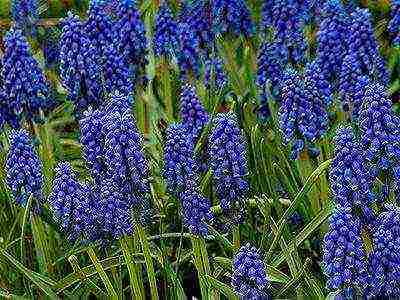
Water hyacinths. Varieties
Water hyacinth, or eichornia (eichornia), comes from the tropical regions of America and is a plant with leaves collected in a rosette, adhering to the surface of the water due to a porous tissue located in a swell at the base of the leaves. Long, up to half a meter, roots are completely in the water. The flower, pink, blue or purple, is similar in shape to a hyacinth, for which it got its name.
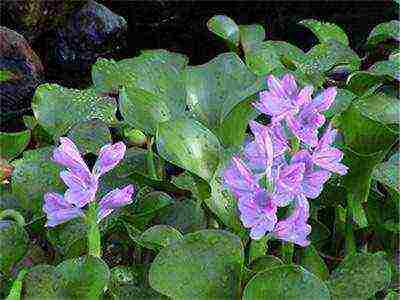
Water hyacinths in their homeland, in the tropics, they grow rapidly, cover the surface of the reservoir with a dense layer, disrupting their oxygen regime and hindering the movement of ships. In the middle lane, they are far from being so aggressive, they can be bred in decorative ponds, provided they winter in a warm room. Common aquarium plant. It has the beneficial property of purifying water by absorbing insecticides, phosphates, phenols, and other harmful substances.
Oriental hyacinths. Varieties
Oriental hyacinth (H. orientalis) or Dutch - the most common, from each bulb grows one peduncle from 15 to 23 cm in height, on which up to 30-35 flowers bloom on thick pedicels. Blooms on average 2-3 weeks.
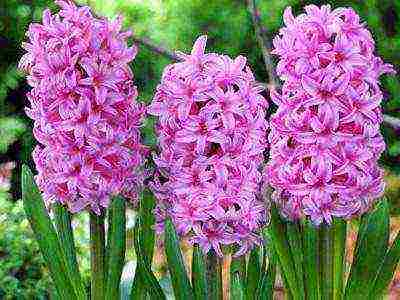
Whitish oriental hyacinth (H. orientalis var.albulus), or Franco-Roman, differs from the Dutch in shorter (up to 15 cm), and weaker peduncles, white inflorescences and the ability of the bulbs to produce 2-3 fragrant flowers.
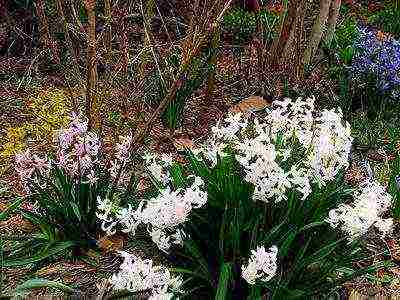
East Provencal hyacinth (H. orientalis var. Provansalis), differs from the previous subspecies in the pink color of flowers.

From oriental hyacinth and its varieties by intraspecific crossing and selection of deviating forms, all currently existing varieties were obtained. Over several centuries of persistent breeding work, more than 400 of them have been created. At the moment, the International Directory of Hyacinth Varieties Registration includes 170 names, of which about 60 are industrially reproduced. Many varieties are over 80 years old, but they are still considered promising and continue to be included in the modern assortment ...
Hyacinths do not have a clear division into groups, like tulips or daffodils. Usually they are classified by flower shape as simple (H. single), double (H. double), multi-flowered (H. multiflora); by the timing of flowering as late, middle and early; by color into 6 groups: white, pink, red, blue, lilac and purple, yellow and orange. There are also varieties of hyacinths recommended for forcing or growing in the garden.
The division by flowering time is rather arbitrary, usually the blue ones bloom first hyacinths, followed by lilac, red, pink, white, and, finally, the last - yellow and orange. Terry varieties bloom later than others. At the same time, the earliest varieties of hyacinths bloom only 10 days earlier than the latest ones.
The most commonly used division of varieties by color.
White hyacinths. Varieties
Hyacinth Arentina, Arendsen (Arentine Arendsen), medium, 18 - 28 cm high, with a cylindrical inflorescence containing up to 35 rather large, up to 4 cm, flowers with wide, bent to the sides, perianth lobes.
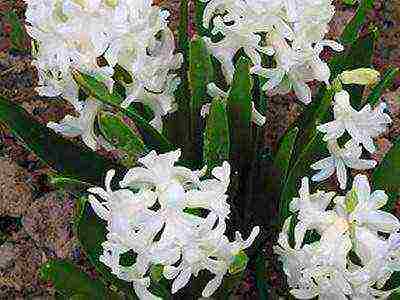
Hyacinth L'Innocence, an early variety, with a peduncle from 18 to 26 cm in height, flowers up to 4 cm in diameter, wide open perianths. An old Dutch variety, created in 1863, is still one of the most popular among white hyacinths.
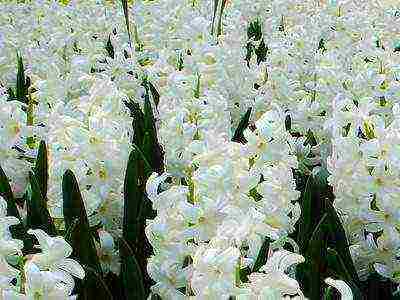
Carnegie Hyacinth is a white hybrid. Carnegie, or Carnegie, medium, up to 22 cm high, with a cylindrical inflorescence, flowers up to 4 cm in diameter, with wide perianth lobes. Hyacinth Carnegie was bred in Holland at the end of the 19th century.
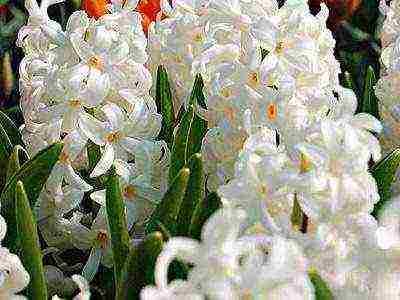
Hyacinth Edelweiss, with peduncles 20-25 cm in length, wide inflorescence with 13-20 flowers of medium (about 3.5 cm) size, blooms in mid-April.

Pink hyacinths. Varieties
Hyacinth Anna Marie (Ann Marie), late, up to 25 cm in height, flowers are light pink with a yellowish-pink perianth tube, inflorescence is loose, cylindrical.
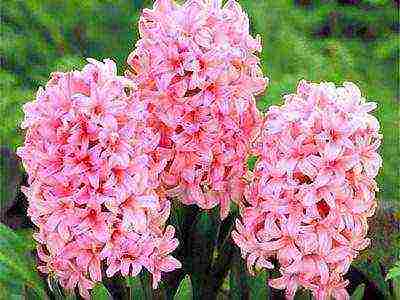
Hyacinth Pink Pearl (Pink Perl), early, with a conical inflorescence, bright pink flowers with a dark stripe on narrow perianth lobes. A characteristic feature of Pink Pearl hyacinth is long, up to 7 cm, bracts, similar to leaves.
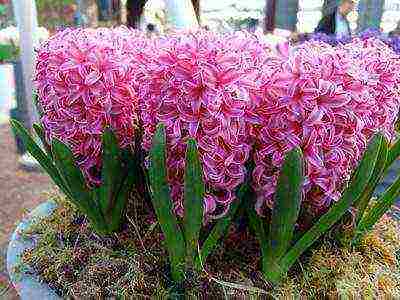
Hyacinth Fondant is an unpretentious variety. Fondant, with mother-of-pearl inflorescence up to 20 cm long and large, about 4.5 cm, flowers. Hyacinth Fondant - a highly productive industrial grade, resistant to adverse conditions.
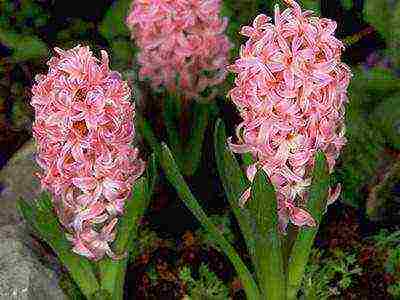
Hyacinth Gertrude, dark pink, with a dense flower raceme bearing 24 flowers in the middle lane and up to 75 in a southern climate.Peduncles up to 24 cm high, brushes up to 12 cm blooming at the end of April.

Hyacinth Lady Derby, in terms of flowering average, in a cylindrical brush up to 37 flowers. Perianths along the edge are white with a pink tint, in the extended part - with crimson-pink stripes on the central veins. Bred in Holland in 1875.

Hyacinth Marconi, pink with a slight purple tint, with inflorescences 15 - 20 cm long, medium density. Blooms in early May.
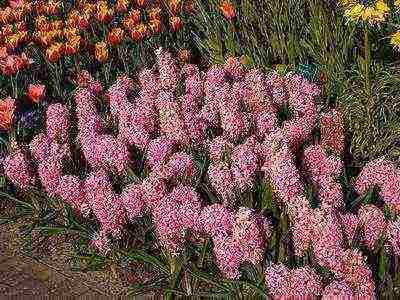
Pink hyacinths. Varieties
Hyacinths are also common among pink varieties. China Pink, salmon-apricot color with a strong aroma, bright pink Rosalia, Delight with large pink (4, 5 cm) flowers.
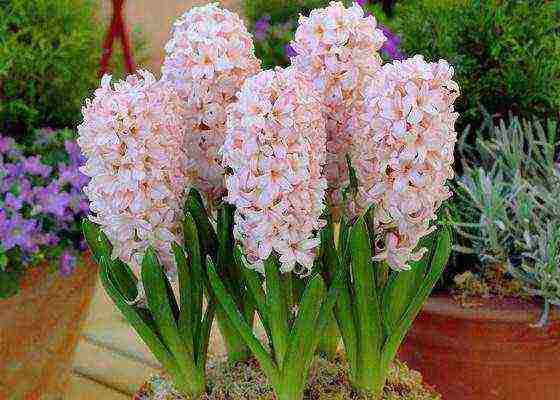
Blue hyacinths. Varieties.
Hyacinth Delft Blue, with a dense wide inflorescence up to 15 cm long, blue large (up to 4 cm) flowers. Delft Blue is a hyacinth considered one of the best of its group for forcing. It blooms in the ground for 20-25 days.

Hyacinth King of the Blues, late, blue-violet flowers with white pharynx, perianth lobes are narrow and long, strongly curved. Origin - Holland, 1865
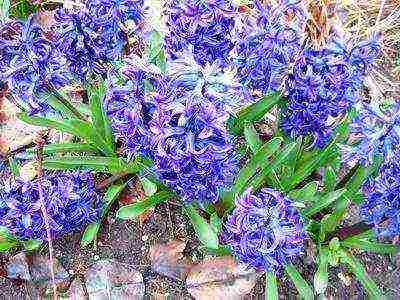
Hyacinth Marie, Maria (Marie), early. The height of the peduncles is 18-25 cm, the flowers are dark blue with a white throat, collected in a compact cylindrical inflorescence. Hyacinth Maria is one of the most common in the territory of the countries of the former Soviet Union. Bred in Holland in 1860
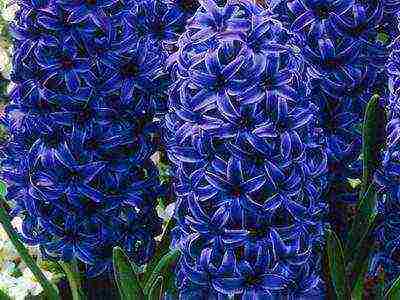
Hyacinth Miosotis (Miosotis), an early light blue cultivar with long, narrow perianth lobes, curled back, darker at the ends.
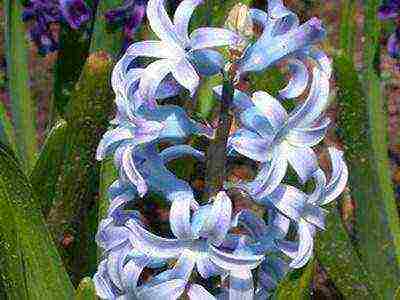
Lilac and purple hyacinths. Varieties.
Hyacinth Amethyst, with compact wide-cylindrical inflorescences of a delicate lilac-crimson shade. The variety is healthy and unpretentious, the flower stalks are 20-25 cm high. The only drawback is the short flowering, only about a week.
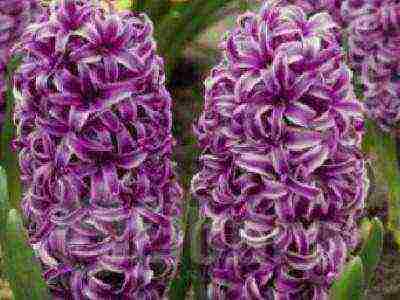
Hyacinth Bismark, up to 30 cm high, early, with large, up to 4.5 cm, pale purple flowers with a clear longitudinal purple stripe on the perianth lobes. The variety is not very suitable for cutting due to short peduncles, good for forcing and growing in the garden. Created in Germany in 1875.
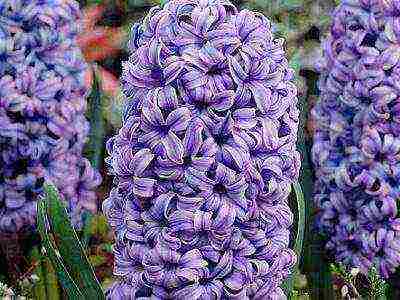
Hyacinth Lord Balfour, early, with loose cylindrical inflorescences of lilac color with a longitudinal stripe of a darker shade. Perianth with long, pointed lobes at the ends, often strongly bent upwards, flower diameter about 4 mm. Dutch variety, bred in 1883.
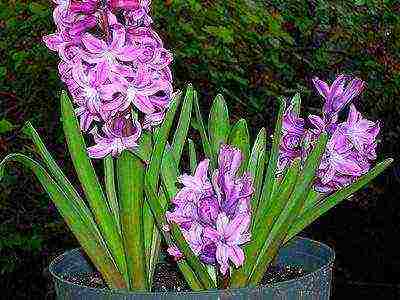
Hyacinth Menelike, with compact inflorescences of black-violet, along the edge of lighter flowers, the diameter of which is up to 3.5 cm. Flowering is long, up to 20 days, in late April.
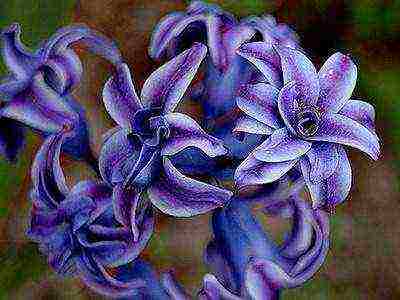
Red hyacinths. Varieties.
Hyacinth Jan Bos, early, excellent variety for early forcing. Inflorescences are cylindrical, dense, with bright magenta-red medium-sized (up to 3 cm) flowers, lighter at the edges, with a white throat.
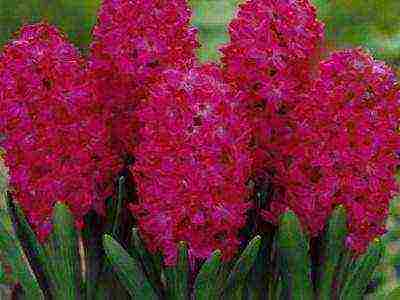
Hyacinth Woodstock, with a dense high (10-15 cm) inflorescence, large purple-crimson flowers, and crimson leaf tips. Possesses a pleasant delicate aroma. Hyacinth Woodstock - one of the best varieties of modern breeding, optimal for forcing at home
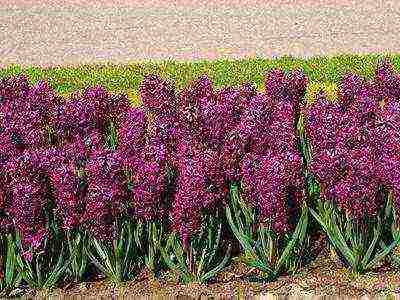
Hyacinth La Victoire, medium, 18-20 cm in height, with a compact red-crimson inflorescence, in a cluster there can be up to 60 flowers with a diameter of about 3 cm.
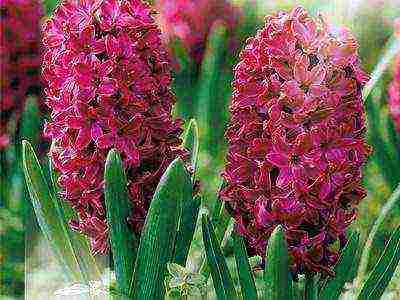
Hyacinth General Pellisier, carmine red, with flowers 3 in diameter, 2.2 cm high, early forcing variety.
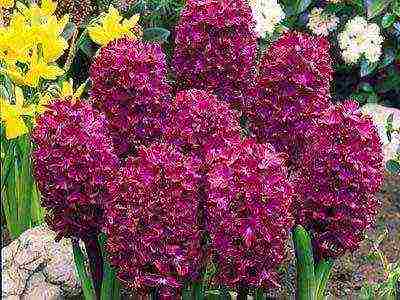
Yellow and orange hyacinths. Varieties.
Hyacinth City of Haarlem, one of the most common varieties in our country with light yellow, large (up to 4 cm) flowers. Medium, the height of the peduncles is up to 30 cm.

Hyacinth Orange Boven, salmon-apricot, with a yellow fauces and dark pink ends of the perianth lobes. Height 18-20 cm, flowers on long stalks, often drooping.

Hyacinth Yellow Hammer, with large bright yellow flowers and a faint aroma. Late.
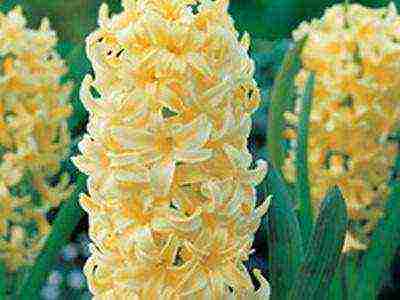
Black hyacinths. Varieties.
Are there black hyacinths?
Separately, we note the so far one-of-a-kind Black variety hyacinth Midnight Mystique... Its selection took more than 16 years, the first sample was presented at the Chelsea-2005 exhibition by the famous company Thompson & Morgan.
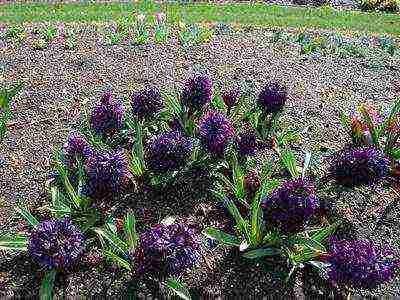
Terry hyacinths. Varieties
Hyacinth Grootvorst, light lilac, medium, very aromatic. It is not very suitable for forcing, it reproduces well vegetatively.
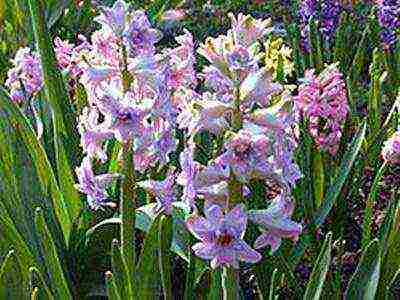
Hyacinth Madame Sophie, with a white narrow-cylindrical inflorescence of large, up to 4.5 cm, flowers. Late, it arose as a mutation of the L'Innosans variety. Height - up to 23 cm.
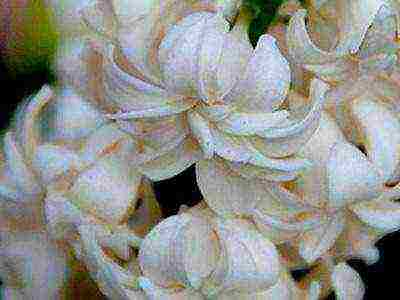
Hyacinth Prince Arthur, with powerful peduncles up to 30 cm high, and dark blue flowers up to 3.5 cm in diameter.
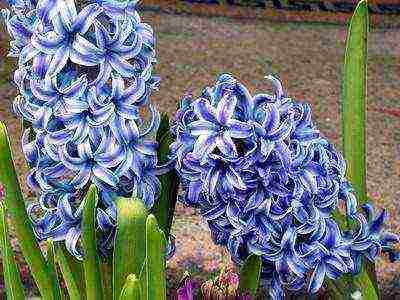
Hyacinth Sunflower (Sunflower), late variety, flowers are densely double cream with a pink tint, inflorescence is narrow and dense, up to 10 cm in length. Peduncle 23-27 cm tall.
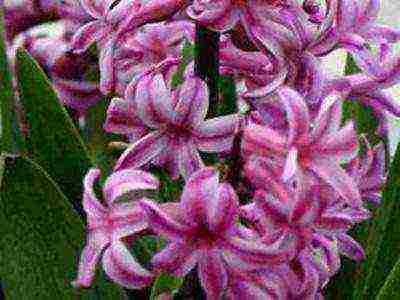
Hyacinth Chestnut Flower, medium, large flowers (about 5 cm), porcelain, light pink. Recommended for open ground. Created in 1880 in Holland.
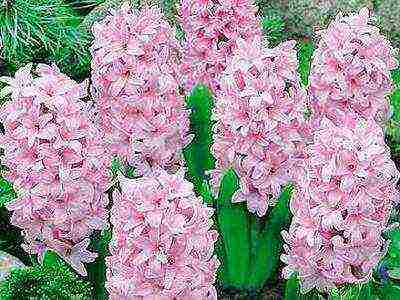
Hyacinth Edison, another light pink variety recommended for outdoor use. Height - 20-22 cm, flower diameter - 3-3.5 cm.
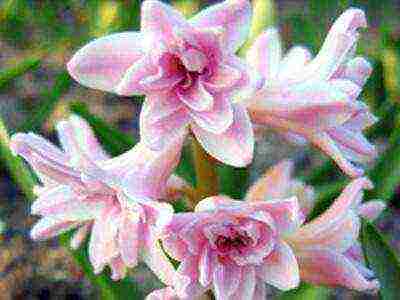
Hyacinth Hollyhock, one of the latest varieties, with bright carmine red flowers.

Multiflorous hyacinths. Varieties
There is a group of varieties multiflorous hyacinths, throwing out from one bulb several peduncles with loose fragrant inflorescences.
Hyacinth Pink Festival
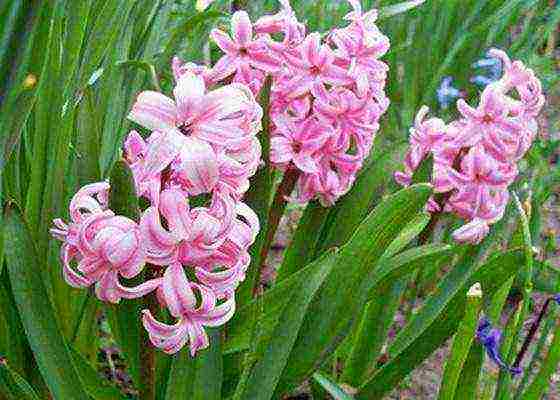
Hyacinth Blue Festival (Blue Festival)

Hyacinth White Festival.

Similar articles:
I love flowers → Primula
I love flowers → WHY DO PEONS ARE NOT FLOWERING?
Ornamental garden → Hosts on the site - it's simple and beautiful
Ornamental garden → Heather - stylish garden decoration
I love flowers → Peony ITO Bartzella
Hyacinth Is a bulbous perennial plant of the Asparagus family. From Greek, the name "hyacinth" is translated as "rain flower". It is a versatile plant that can be grown at home and in the garden. Hyacinth bulbs consist of fleshy grassy leaves with a thick flowering stem 30 cm tall. After flowering, the stem dries up along with the leaves, and a bud forms on the stem inside the bulb, which then turns into a new bulb.
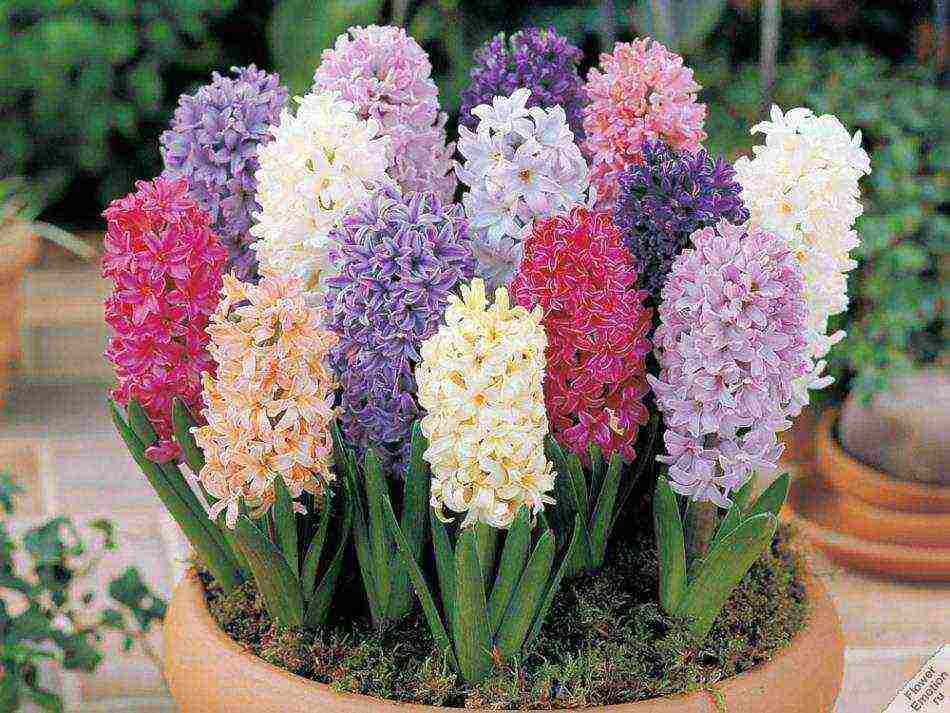
Hyacinths in a pot arrangement
Hyacinths bloom in early spring and delight the eye with bright, unusually beautiful and very fragrant flowers. Modern varieties of hyacinths amaze the imagination with an abundance of flowers: white, pink, red, light yellow and orange, blue and purple, burgundy and even black. Beautiful fragrant flowers of all kinds of bright colors are widely used to decorate gardens, backyards, park areas. Hyacinths are equally good both in a monoclumba and in a flower arrangement.
Types and varieties of hyacinths
Currently, there are three types of hyacinths:
- oriental hyacinth (Hyacinthus orientalis)
- hyacinth Litvinov (Hyacinthus litwinowii)
- Transcaspian hyacinth (Hyacinthus transcaspicus)
Each of the species has a wide variety of varieties, which in turn are subdivided into different categories - according to flowering periods - early, middle and late, in appearance - double and smooth, in colors and shades, in winter hardiness, etc.
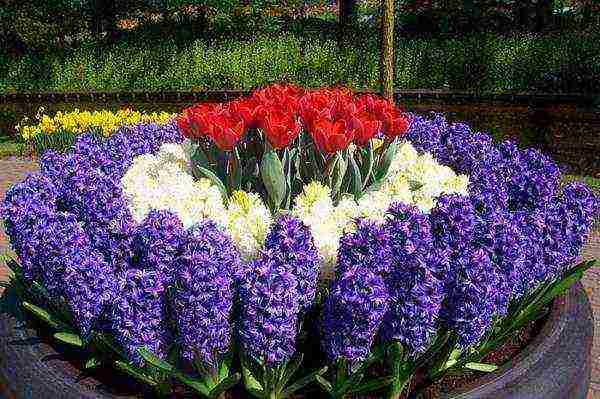
Magnificent spring flower bed of perennials - hyacinths combined with tulips
The most beautiful variety of hyacinths is the Oriental Hyacinth.
The most popular and beautiful varieties of Oriental hyacinth are:
White hyacinths
- White Pearl
Flowers are double, bell-shaped, numerous (up to 35 pieces), in a dense inflorescence. The flower size is 3.5-4 cm in diameter. The flowers have a strong and persistent sweet scent. Inflorescence is a dense raceme, spherical-cylindrical in shape, 10-15 cm high. Prefers sunny places or partial shade, with protection from the winds. The beginning of flowering is beginning - mid-spring. The flowering period is up to three weeks.
- Louvre (Louvre)
Beautiful blue flowers and delicious aroma. Suitable for open field, for early forcing indoors, and also for cutting. The flowering period is 12-15 days. Prefers moderate moisture and sunlight.
- Carnegie
A charming variety. It is a great choice for garden decoration or for creating a flower arrangement. Very frost-resistant - this variety can withstand temperatures down to -34.4 ° C. Prefers sunny or partial shade, with protection from the winds. Flowering time is mid-spring.
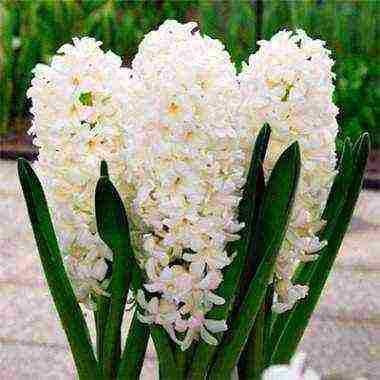
White Pearl
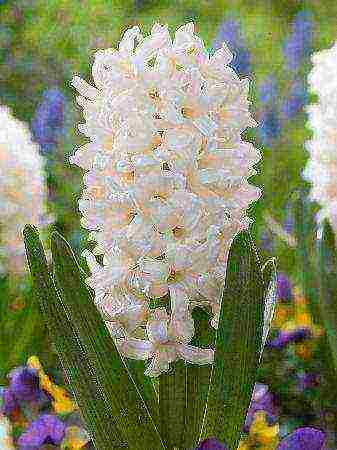
Louvre (Louvre)
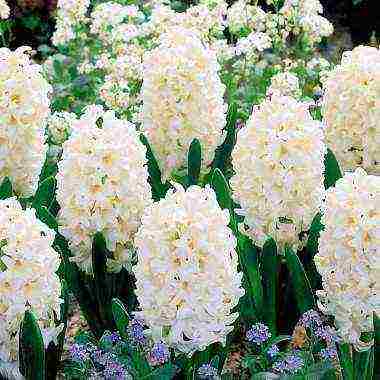
Hyacinths
Light yellow hyacinths
- Yellow Queen
Gorgeous lemon-yellow fragrant flowers, suitable both for monoclumba and for various combinations with other types of flowers. Plant height: up to 30 cm, flowers are classic, large, with a diameter of 3.5-4 cm. It reproduces well, gives excellent distillation. The flowering time is March-April, the flowering period is up to 3 weeks.
- City of Haarlem
Very bright and attractive large-flowered variety. It is the undisputed leader among the plants used for forcing and decorating flower beds in spring. The flowering period occurs in March-April, forming lush, rich yellow inflorescences 10-12 cm long, 4 cm in diameter and a bush height of 25-30 cm. Duration of flowering 2-3 weeks. Prefers a sunny or slightly shaded location.
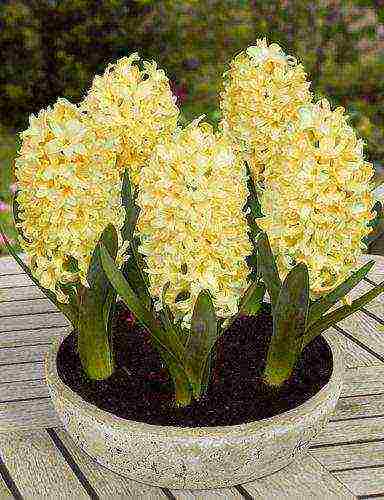
Yellow Queen
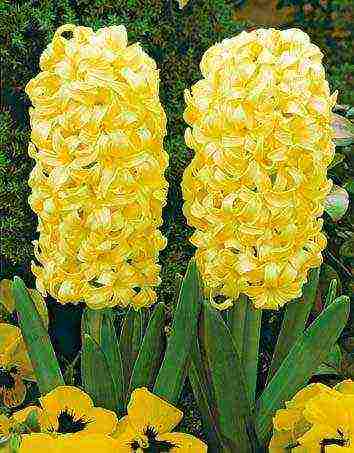
City of Haarlem
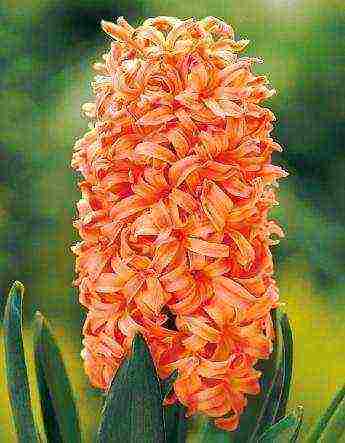
Gipsy Queen
Light orange hyacinths
- Gipsy Queen
The rare and unusually beautiful delicate light peach color of this flower immediately attracts everyone's attention. This allows you to make this variety the brightest accent in your spring garden. Gipsy Queen is ideal for winter and spring forcing, flower gardening and growing in pots. The flowers of this variety are hard, as if covered with wax, due to which flowering takes longer than other varieties. The flowering period is 10-20 days. The plant is light-loving.
Blue and purple hyacinths
- Crystal palace
Crystal Palace is a terry hyacinth that is one of the first to bloom in spring. The flowering period is in March-April. The inflorescence is lush, cylindrical with 30-35 large flowers 3.5-4 cm in diameter, saturated violet-blue color. In the center along the perianth petals there is a darker stripe, which makes the hyacinth inflorescence of this variety appear striped. Since the plant has divine beauty, this variety is popular all over the world and often gets to various competitions and exhibitions. Of course, you can decorate with Crystal Palace hyacinth not only a flower bed, but also a window sill, this plant is perfect for pot cultivation, forcing and cutting. Prefers a sunny or slightly shaded location, protected from strong winds.
- Blue Giant
Blue Giant hyacinth flowers have a delicate and pleasant scent that will fill your garden or room with it if you make a bouquet of them. You can choose any site for planting hyacinth bulbs, therefore they can grow both in brightly lit areas and in the shade. Also, make sure that the bulbs are not in excessively damp soil, as they can rot.
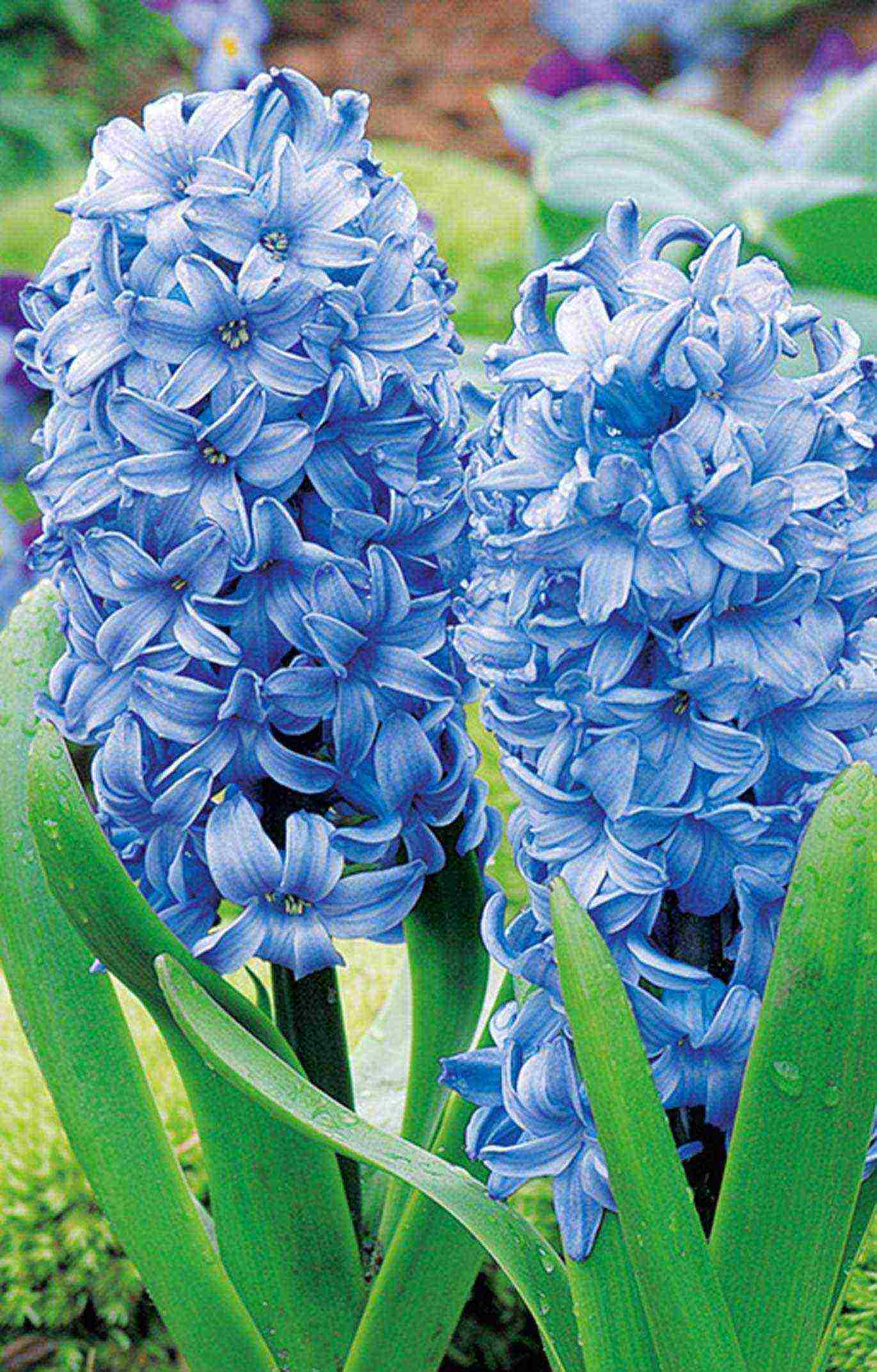
Blue Giant
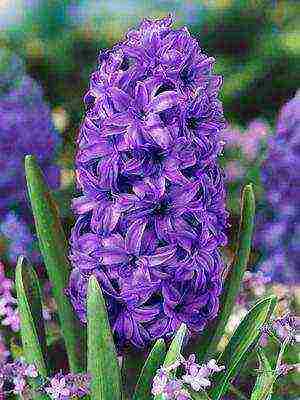
Crystal Palace
- Blue Jacket
This variety blooms from March to April, forming a lush flower with a large cylindrical inflorescence up to 30 cm in height, lilac-blue, lighter tones along the edge of the perianth, which gives the inflorescence a striped appearance, the flower diameter is 4 cm, the inflorescence can consist of 30 -40 flowers. The aroma of Blue Jacket hyacinth is pleasant and strong. Duration of flowering is 10-15 days. The plant is light-requiring, low winter hardiness.
- Peter Stuyvesant
Peter stuyvesant is a bright early flowering variety with double flowers. It was introduced recently - in 2001. Named after the famous Dutch governor of the New York colony in the 1600s. A real aristocrat! This is the most "blue hyacinth". The peduncle reaches a height of about 25 cm. Flowers are double, bell-shaped, numerous (35-40 pieces), of bright blue color with a purple tint. The size of the flower is 3-4 cm in diameter and the same or slightly longer in length. The flowers have a very strong and persistent scent. The inflorescence is a dense raceme, spherical-cylindrical in shape and 12-15 cm high.The flowering period is long - up to three weeks. This hyacinth will add a noble touch to your garden. Ideal for container growing and forcing. Prefers sunny or partial shade. Protect from wind and drafts. Flowering time is March-April.
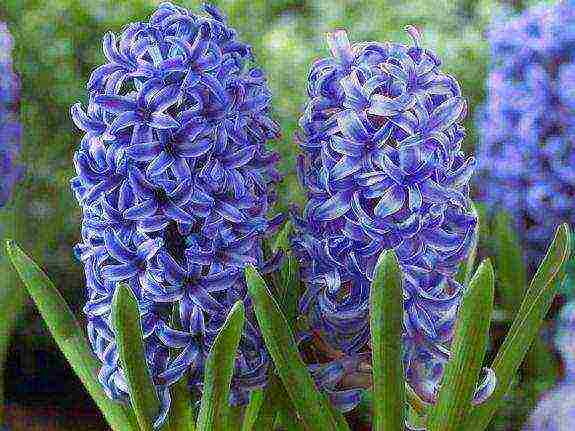
Blue Jacket
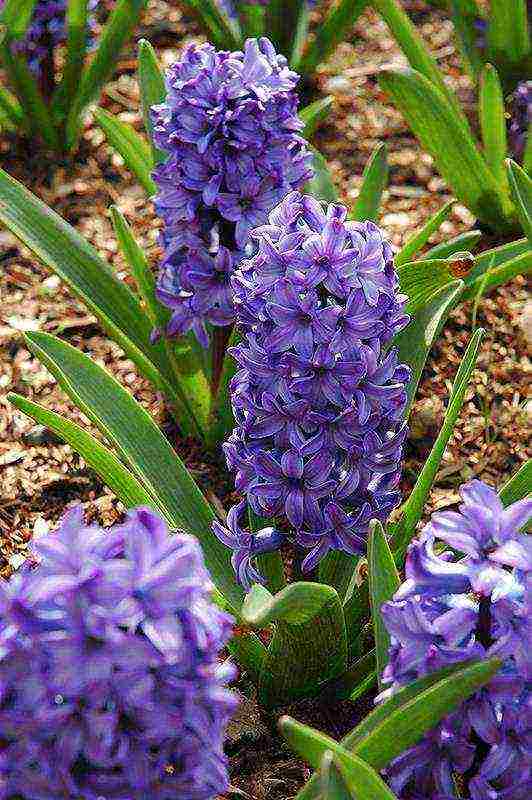
Peter suyvesant
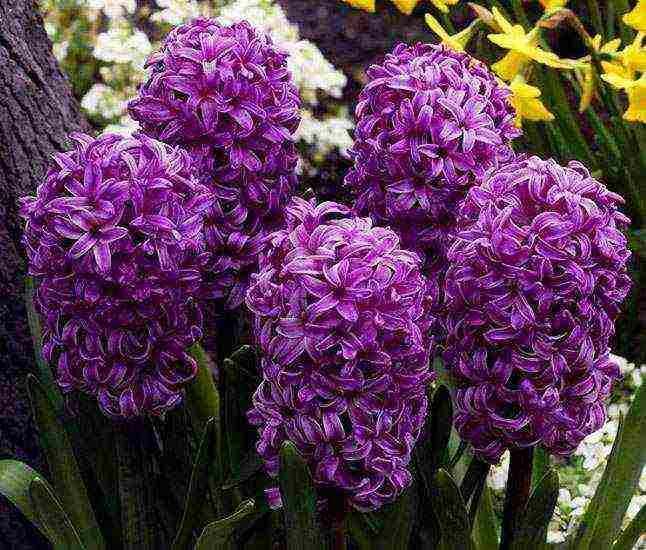
Amethyst
Pink and red hyacinths
- China Pink (Tea Rose)
It blooms in April-May, forming a lush large pale pink inflorescence 12-15 cm high.It will not be possible to pass by this flower - it will enchant you with its delightful appearance and delicate aroma. China Pink is perfect for forcing, even for beginners, for decorating flower beds in the spring, looks great both in pots and in a spring flower bed. Duration of flowering is 10-15 days. Prefers a sunny or slightly shaded location, protected from strong winds.
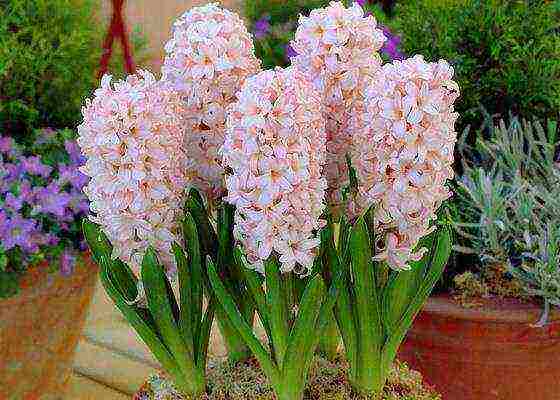
China Pink (Tea Rose)
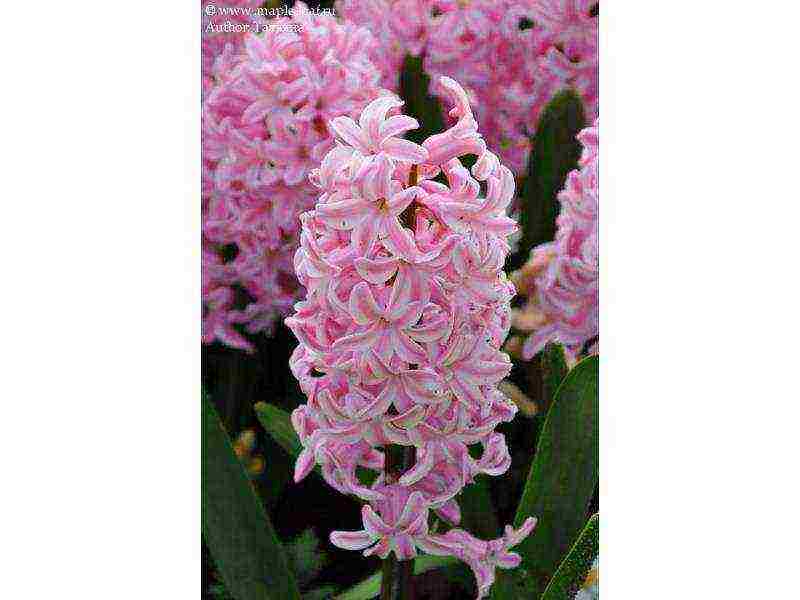
Hyacinth Fondant
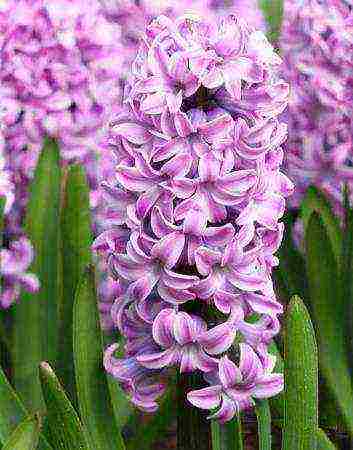
Splendid Cornelia (Hyacinthus Splendid Cornelia)
- Broadway
- Anna Marie
- Fondant
- Splendid Cornelia (Hyacinthus Splendid Cornelia)
- Jan Bos (Jan Bos) is a wonderful primrose with lush inflorescences, consisting of many bright flowers. Jan Bose hyacinths bloom in early spring in March with bright and very fragrant flowers, forming a dense, lush inflorescence, studded with blossoming flowers, 12 cm high.In a bunch of 18-26 dark crimson flowers with a diameter of 2.5-3 cm.The plant height is 20-25 cm. Duration of flowering 2-3 weeks. Perfect for forcing, decorating spring flower beds, and for cutting. Prefers a sunny or slightly shaded location, protected from strong winds.
- Burgundy Hyacinth - Woodstock
Belongs to the class of large-flowered. The plant is ideal for planting along alleys, in sunny or slightly dark places. Flowering occurs in March-April. Woodctock is distinguished by an unforgettable purple-lilac color and a huge inflorescence, the height of which is 25 cm! Duration of flowering 15-20 days.
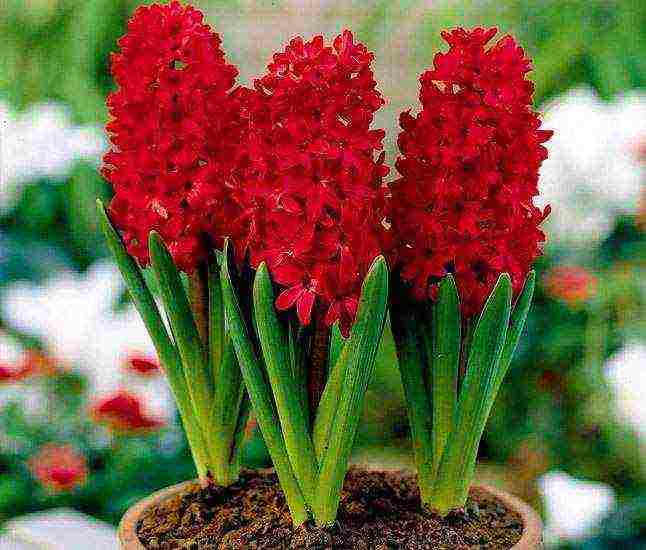
Jan Bos

Hyacinth Woodstock (Woodstock)
Black hyacinth
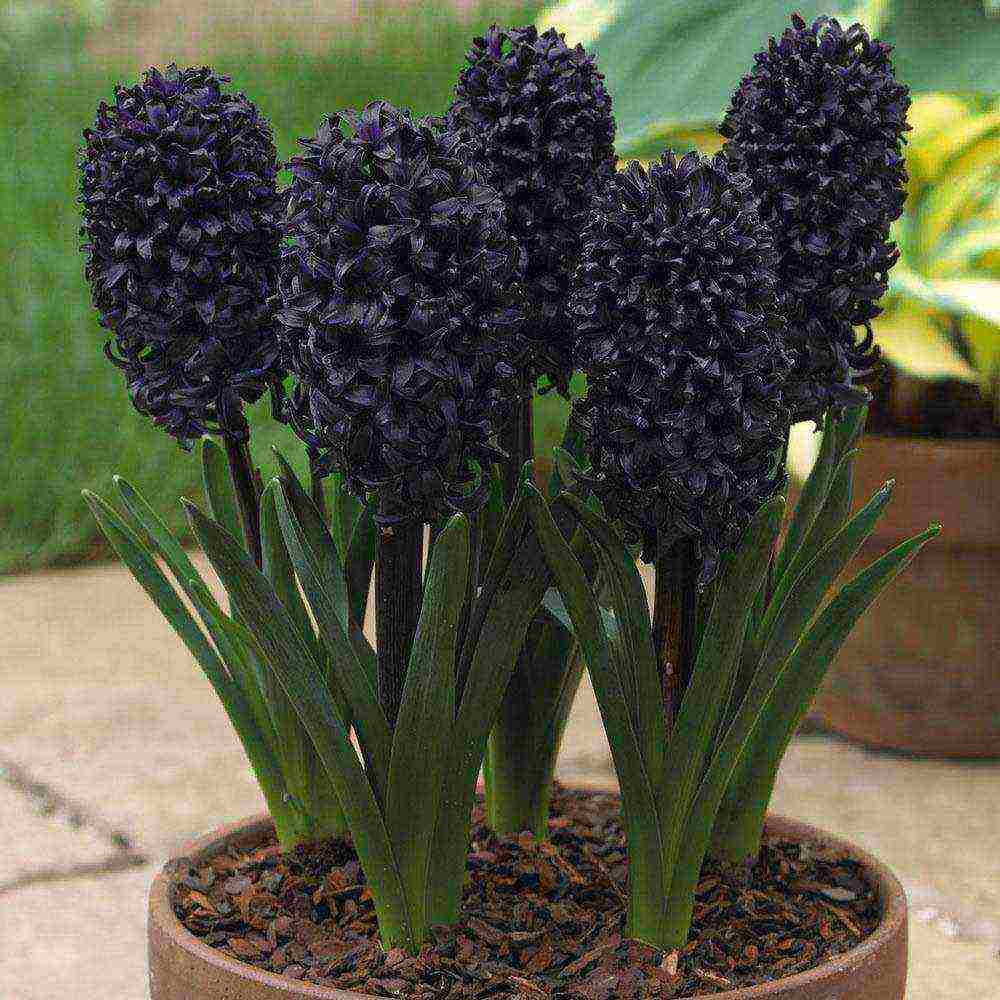
Black Hyacinth - Midnight Mystique
Midnight Mystique is one of the most modern varieties first introduced at Chelsea 2005 by Thompson & Morgan.


